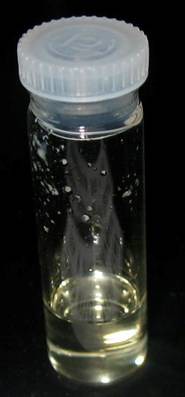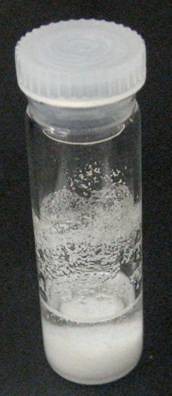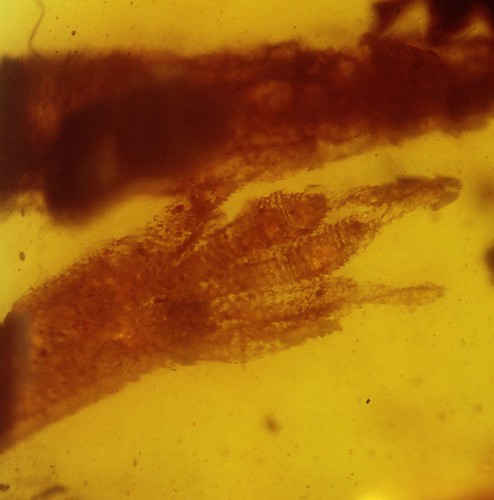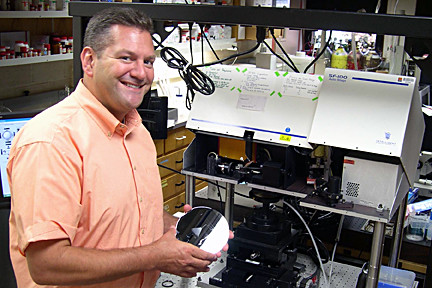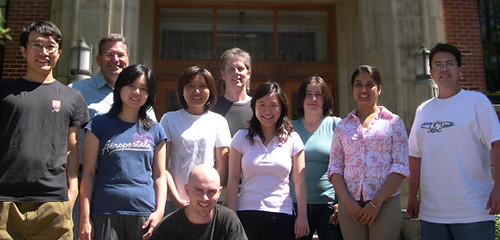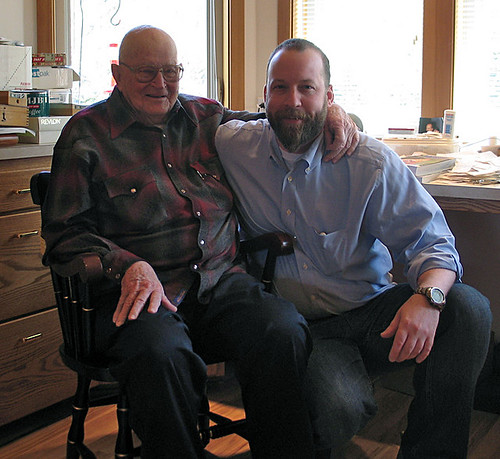Good news from 10-2-08 OSU Media Release:
Dr. Rich Carter is at it again! Working with Hua Yang, an OSU postdoctoral research associate, Carter has developed a new and improved “organocatalyst”. Hua Cat is environmentally friendly, inexpensive and very effective chiral compound (chiral compounds are the basis for about 90% of all new drug development, which by the way is soon to be a $5 billion industry). It provides solubility that’s more than 10 times higher than related compounds now being used. Thusly:
Dr. Carter explains, “This is a comparison image of our invention, Hua Cat, versus a competitor. As you can clearly see, the vial on the top is clear and all of Hua Cat is dissolved. In contrast, the vial on the bottom contains one of our competitors, which is completely insoluble in the same solvent. As our catalyst Hua Cat is completely dissolved, it is much more readily able to catalyze the reaction. In contrast, the competitor is not dissolved and unable to catalyze the reaction.”

